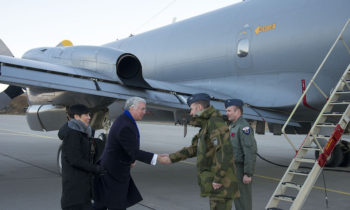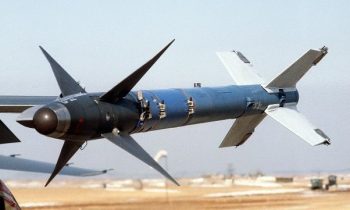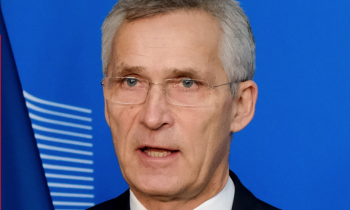 Norway’s decision to buy five P-8 maritime surveillance aircraft is the latest in a series of moves tying the NATO member closer to the UK and US, as top defense officials from the three countries seek to re-energize a maritime-surveillance alliance that had weakened in recent years.
Norway’s decision to buy five P-8 maritime surveillance aircraft is the latest in a series of moves tying the NATO member closer to the UK and US, as top defense officials from the three countries seek to re-energize a maritime-surveillance alliance that had weakened in recent years.
The three countries formed a strong maritime-surveillance network throughout the Cold War, but as relations with Russia thawed and attentions turned toward counter-terrorism activities after the 9/11 attacks, the desire to keep a strong presence in the High North faded.
In 2006, the United States decided to leave the Keflavik, Iceland, air base which had been home to its P-3 airplanes designated to patrol the High North. Then in 2010, the UK decided to kill a replacement program of its Nimrod maritime surveillance aircraft without a replacement in sight. And while Norway kept maintaining its own P-3 fleet, Oslo was slow to decide on a replacement for the aging aircraft.
Following Russia’s invasion of Ukraine, however, the desire for planes capable of hunting submarines was suddenly on the forefront of everyone’s mind, says Magnus Nordesman, director of the Atlantic Council’s Transatlantic Security Initiative.
“During the Cold War there was this [anti-submarine warfare] triangle between the US flying missions out of Keflavik, the Brits flying out of Scotland and the Norwegians flying P-3s out of Andoya,” he said. “That triangle that existed in the Cold War is coming back.”
In 2015, the US announced it would look to return to Keflavik, where roughly $21 million in modifications – such as cutting a notch into a hangar door to accommodate the P-8’s taller tail – are slated to make it a usable base once more. And the UK decided to procure a fleet of nine P-8’s, a sale that was officially announced at the 2016 Farnborough Air Show.
Now, Norway will add five P-8s to the region. And while it may take a while for the P-8s to come online, eventually there will be an interoperable fleet of maritime surveillance aircraft capable of hunting for Russian submarines in the region – with three governments that are eager to work together at an operational level.
“For a country like Norway, with maritime areas that are almost 80 percent of the Mediterranean, they are almost seven times as big as our land territory, it is unthinkable for us not have good situational awareness in our own areas,” Norwegian Defense Minister Ine Eriksen Søreide told Defense News in a Dec. 2 interview at the Reagan National Defense Forum.
“We see that Russia is also developing new capabilities, especially sub-surface capabilities, that we need to keep track on. And for us, it is just a very good way to continue to develop a very important capability for Norway that gives us the situational awareness we depend on.”
Both US Defense Secretary Ash Carter and his deputy, Bob Work, have spoken admiringly in the past about Søreide and Michael Fallon, the UK defense secretary. And both Fallon and Søreide have kind words for each other, both in private and when sharing the stage, such as at the Reagan National Defense Forum, held outside Los Angeles on Dec 3.
Fallon traveled to Norway’s Bodø Main Air Station in early November to sign an agreement on training and sharing capabilities between the UK and Norway, with a focus on maritime surveillance.
In a Dec. 4 interview, Work called the expanding relationship between the three countries “really, really exciting,” and said he was “very confident and optimistic that you will see more defense collaboration and more defense ties” between the nations.
Speaking about the fact the three nations will all operate the P-8 out of Europe, Work said, “We haven’t had something like this since the Cold War, … and that just opens up a whole new level of possibilities for us to in the future do collaborative and coordinated operations.”
Could that collaboration include Norway taking on the leadership role among its neighbors in Sweden, Finland and Iceland? Work acknowledged there are ties being formed, but pointed out Norway is the most Atlantic-facing of those nations, something Nordesman highlighted as well.
“I think there is a general trend across NATO that while the alliance remains important, various regions start building their own coalitions of the willing” focused on different regions, said Nordesman. “To some degree its natural. The people who live there care about different things. So US, UK, Norway, to some degree Denmark and Iceland, form one around the North Atlantic. You see Swedish, Finish, Baltic, Polish [governments] caring about the Baltic sea. You see Bulgaria, Romania, Turkish around the Black Sea. So throughout, there are these little clusters of cooperation that are beginning to emerge.”
Speaking to Defense News on Dec. 3, Søreide said Norway was looking to do more with intelligence sharing among the northern nations.
“The fact we are in the same region and we see much of the same picture around us makes it valuable for us to be able to share intelligence. There are other things that we do together that strengthen our operational capabilities,” she said, but also noted that both Sweden and Finland are not part of NATO, thus restricting some of the options.
Cost Reductions
The equipment coordination between the three countries could result in procurement benefits as well.
In September, Vice Adm. Joseph Rixey, director of the Defense Security Cooperation Agency, said he wanted to expand a recent program that allows NATO allies to pool their resources and buy as a group from the US. That expansion, Rixey argued, could eventually lead to block buys of equipment for systems such as the P-8.
“Imagine what you could do with lead nation procurement if you could get something like the P-8 — maybe not the P-8 itself, but certainly all the support, the sonobuoys, the spares, everything associated with it that you could buy — in batch quantities and not have to worry about third-party transfer restrictions,” Rixey said then.
The first steps towards such an agreement have already been taken, with the Fallon and Søreide signing an agreement in November to find ways to reduce costs for the P-8. And while details on what that actually means are slim, both ministers acknowledged that some form of equipment joint buy may make sense in the future.
“We just signed an agreement with the UK . . . on doing a lot of cooperation on both the F-35 and the P-8s,” Søreide said. “For the first time in over 60 years we will be flying the same fighter aircraft, the F-35, and we have also huge opportunities for cooperating on training and exercises, spare parts, maintenance and actually everything that entails having these new modern capabilities.”
Adds Work, “When you have that interoperability and you can land and get servicing wherever you land — wash racks, maintenance hangars you can use — it just makes it a lot easier .”
Asked about the option to jointly buy equipment, Fallon said, “We’ll be talking to the Norwegians about that, absolutely,” adding that he sees “huge scope for reducing costs looking at training, how they are supported, maintained and operated.”
Richard Aboulafia, an analyst with the Teal Group, says a joint-buying program is a great idea for Norway, as a fleet of five planes is “disproportionately expensive.”
“You have full overhead burden falling on five aircraft, so any way to spread that by sharing spares or training costs with a larger user like the US Navy or Royal Air Force counts a lot,” he said. “And it’s made easier by the fact that most of the plane is just a commercial jet. The military stuff is military-specific, but the stuff . . . that requires greater spare consumption, that’s all commercial. So there are many things you can do.”
Beyond cost benefits, the UK could also gain by having Norwegian and US P-8s fill a possible shortage of P-8s caused by only being able to afford five of the aircraft, which is believed to be less than the actual mission requirements.
Fighters and Troops
In addition to the P-8, the three countries will all be operating the F-35 joint strike fighter in the future – giving yet another collaborative opportunity for the three nations.
Work noted that the first place the F-35 will be stationed is the UK, which “opens up whole other areas of collaboration” among the three nations. So too, he said, does a decision to base roughly 330 Marines on Norwegian soil on a temporary rotation throughout 2017.
While US troops have come in and out of Norway for training exercises, this is the first permanent rotation on Norwegian soil for the US since the start of the Cold War, and one that Søreide believes “can be a very good way of strengthening also our operational capability alongside the US operational capability.”
“I think it is a big deal, it is a very obvious demonstration of the deepening US-Norwegian relationship,” Nordesman said of the forces, noting the move is a break from the tradition of avoiding allied forces stationed in the north of Norway in order to not provoke Russia.
And while leadership in the US may be changing, expect the three partners to continue to focus on growing the alliance. Both Søreide and Fallon expressed confidence in president-elect Donald Trump’s pick for Secretary of Defense, retired Gen. Jim Mattis, citing familiarity between Mattis and some of their top commanders.
Those ties with Mattis may benefit Norway in particular, as the nation falls below the NATO-requested target to spend 2 percent of GDP on defense. Comments from candidate-Trump during the campaign have led to questions about whether NATO countries not meeting that requirement can be assured of US defense in the future.
(defensenews)



